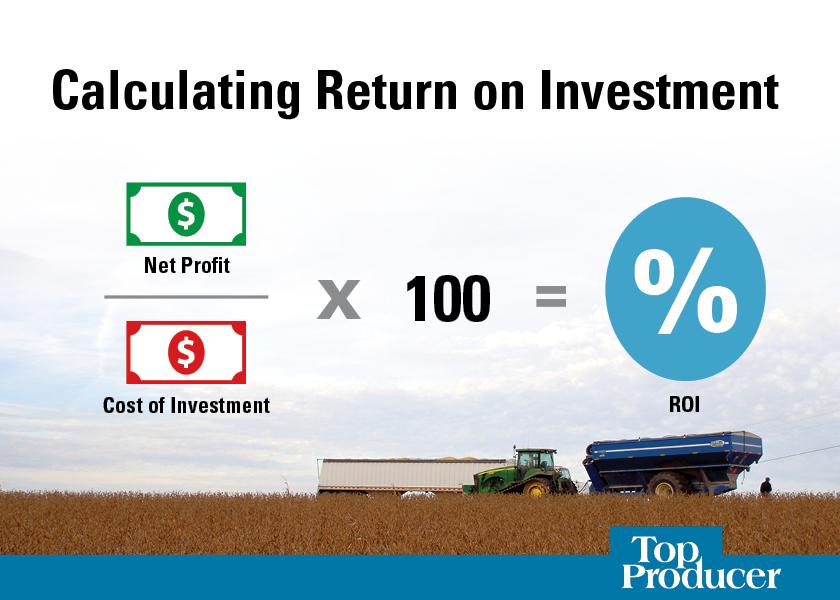A Simple Checklist to Evaluate ROI on Your Farm

The concept and calculation of return on investment (ROI) is pretty simple. It is most commonly measured as net income divided by the original capital cost of the investment. The higher the ratio, the greater the benefit earned.
Yet, ROI is often poorly defined and poorly understood, says Brent Gloy, economist at Agriculture Economic Insights.
“Return on investment is a popular phrase and it can be insightful,” he says. “But it also has its limitations.”
Gloy says understanding your ROI is helpful when you are:
- Considering uncertainty.
- Comparing or benchmarking alternatives.
- Evaluating performance over time.
To truly analyze your ROI, create an internal operating procedure for how you will calculate and use it, suggests David Widmar, economist at Agriculture Economic Insights.
“You can’t invest in every operation that comes your way, so ROI can help you prioritize,” he says.
Widmar and Gloy suggest this ROI checklist:
- Identify all costs and potential revenue. Start with a clean sheet of paper.
- Evaluate alternatives. Challenge your thinking.
- Review key assumptions and possible outcomes.
- Consider constraints: capital, labor, etc.
Factors, Calculations and Reality
With higher commodity prices, you may be in the market to make an upgrade or new investment on your farm. While you need to read the promotional information and research done by the companies providing the service or product you’re considering, do so with a realistic frame of mind, encourages Shay Foulk, farm business consultant with Ag View Solutions and an Illinois farmer.
Your goal is to pinpoint the minimum benefit your farm needs to see to cover the costs and your time for the investment. You want to avoid phrases such as, “I know this is going to add 5 bu. to our bottom line,” or “I think this product is going to give us an agronomic advantage.”
Foulk suggests evaluating these factors:
- Grain Price: Projected price for the commodity you will be using to evaluate your margin enhancement.
- Investment Cost Per Acre: How much will it cost to make this enhancement or upgrade?
- Yield Improvement Per Acre: This is your best educated guess for yield improvement.
- Acres: Across how many acres will you use this margin enhancement on?
- Years of Use: How many years do you plan to use this margin enhancement?
Watch a Farm Credit Services of America webinar of Gloy and Widmar discussing ROI.
Read More
Your Path to Smart Farm Technology Investments
How Quick Is The Payback For A $150,000 Planter Expense?
Should You Buy That Farm? A Tool to Help You Do the Math
The 4 Questions to Ask Before Making Any Big Business Decision







